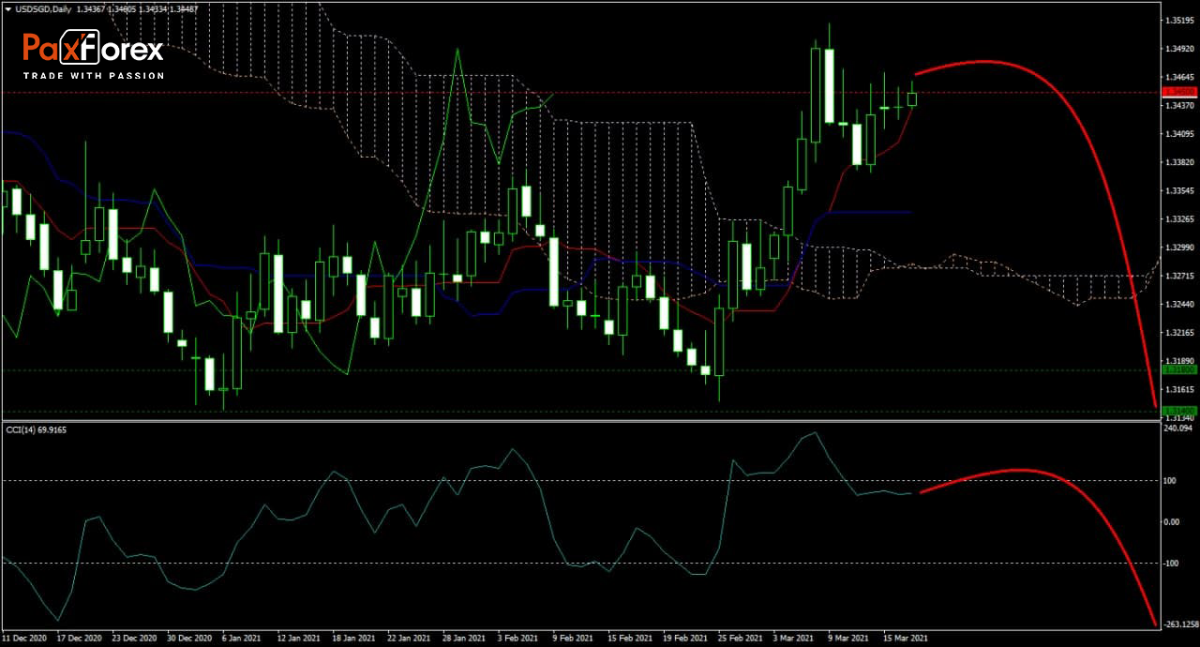US Housing Starts for February are predicted at 1,560K starts, and Building Permits at 1,750K permits. Forex traders can compare this to US Housing Starts for January, reported at 1,580K starts, and Building Permits, reported at 1,886K permits. US Crude Oil Inventories for the week ending March 12th are predicted at 2.964M. Forex traders can compare this to US Crude Oil Inventories for the week ending March 5th, reported at 13.798M. US Gasoline Inventories for the week ending March 12th are predicted at -2.996M and US Distillate Stocks at -3.379M. Forex traders can compare this to US Gasoline Inventories for the week ending March 5th, reported at- 11.869M, and US Distillate Stocks, reported at -5.504M.
The forecast for the USD/SGD turned bearish after the mos recent rally took lost momentum. Economic data out of the US disappointed this week. It showed that without government stimulus, there are recessive developments. The Kijun-sen flatlined, together with the Ichimoku Kinko Hyo Cloud, while the Tenkan-sen remains in an uptrend. After the CCI moved out of extreme overbought territory, it can drag price action lower with it.

Should price action for the USD/SGD remain inside the or breakdown below the 1.3415 to 1.3470 zone, the following trade set-up is recommended:
- Timeframe: D1
- Recommendation: Short Position
- Entry Level: Short Position @ 1.3450
- Take Profit Zone: 1.3140 – 1.3180
- Stop Loss Level: 1.3515
Should price action for the USD/SGD breakout above 1.3470, the following trade set-up is recommended:
- Timeframe: D1
- Recommendation: Long Position
- Entry Level: Long Position @ 1.3515
- Take Profit Zone: 1.3610 – 1.3655
- Stop Loss Level: 1.3470
Google | Alphabet Fundamental Analysis
EUR/JPY | Euro to Japanese Yen Trading Analysis
Recent articles

EUR/JPY | Euro to Japanese Yen Trading Analysis
